GMOs Fact or Fiction (From Class Activity)
Common GMOs Commercially Available:
1. Genetic Modification
GMO – an organism that has had its DNA or genetic material altered in some way. Usually from the inclusion of an another organism’s DNA into its own.
- The genetic code is universal – same amino acids are used in protein synthesis. Therefore, all living organisms can be genetically modified.
- Therefore, we can genetically modify/engineer species through gene transfer.
- Gene transfer – Technique of taking one gene out of an organism (the donor organism) and placing it in another organism (host organism)
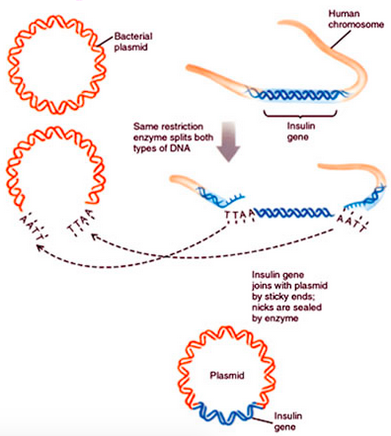
A. A Mythical GMO
Tomato Plants with “fish genes”

Arctic Flounder can create an antifreeze protein to keep its blood liquid.
Tomatoes are very susceptible to quick freezes that can wipe out entire crops.
Goal: Create a tomato plant that can create its own antifreeze protein to protect crops from being wiped out by frost.

Reflect: Thoughts or concerns about this potential GMO? What about inserting animal genes into plants?
Process:
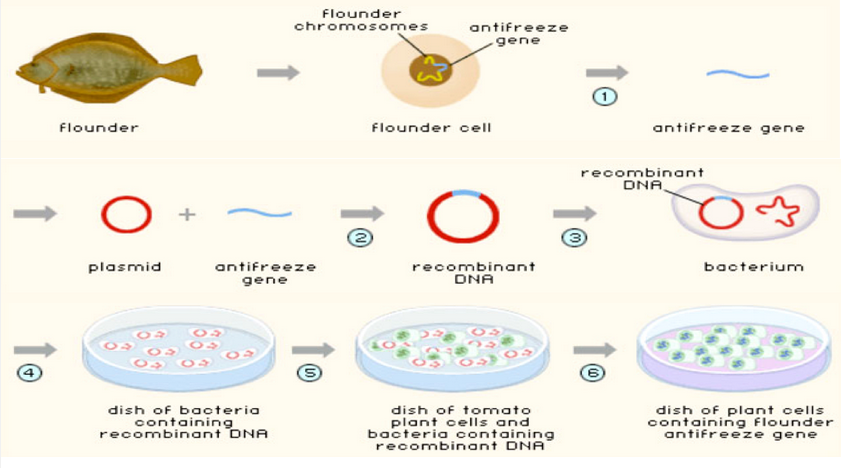
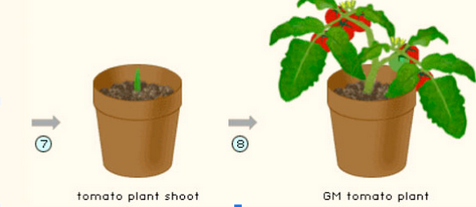
Outcomes:
- The antifreeze protein inhibited ice formation in flounder blood, but after extensive tests there was no benefit in transgenic tomatoes.
- The tomato never became commercialized and never was sold.
- Stories of “Fishy” tomatoes causing allergic reactions to those who are allergic to fish become widespread.
- It became the most widely used example for “Anti-GMO” advocates (even today).
- Claims that all GMOs we eat are unnatural due to mixing genes between animals and plants.
Correcting Misconceptions – Note Break:
-
Go through your list of approval and commercially available GMOs. Do you see any plants/crops (recipient) that have animal genes (donor)?
Yes, there are some approved. None are for sale.
-
If we did take one single gene from a flounder and inserted it into a tomato, would that tomato be “fishy”? Why or why not?
Inserting a fish gene into a tomato does not make a tomato “fishy”. We share some genes with fish (60-70%), but that doesn’t make us fish. Indeed, a single gene can hardly be considered “part of” a specific organism at all. An organism is defined by their genome – the entirety of their genes and their interactions.
-
Some claim “animal genes” being inserted into plants is unnatural and too far. Do you believe this is true? Why or why not?
All living things have the same DNA – four nucleotides A, C, T, G. A plant donor gene and an animal donor gene would be no different.
B. A Real GMO
Human insulin is a hormone that regulates glucose levels in blood. People with type 1 diabetes do not produce their own insulin. Therefore, insulin therapy is vital to stabilize blood glucose and allow cells to get glucose for cellular respiration. Collecting this hormone is very challenging and used to require collection from dead bodies or from dead cows/pigs (limited amounts!)
Goal: Engineer a common bacterium to produce insulin quickly and cheaply.
Production of human insulin (a hormone that regulates glucose levels in blood) is an example of gene transfer.
How it works:
1. mRNA that codes for insulin is extracted from pancreatic cells. The DNA of the insulin gene is made from this.
- mRNA – is Messenger RNA. DNA is copied into this so the “blueprint”” for a protein (i.e. 1 gene) can leave the nucleus.

- Plasmids from bacteria cells are cut with a restriction enzyme (an enzyme that recognizes and cuts a specific code of DNA) leaving ends the DNA can attach to “sticky ends” or long overhangs.
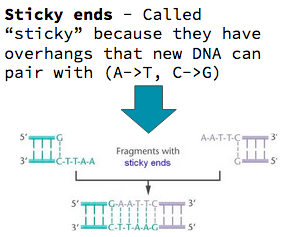
- The target gene pairs with the sticky ends of the plasmid
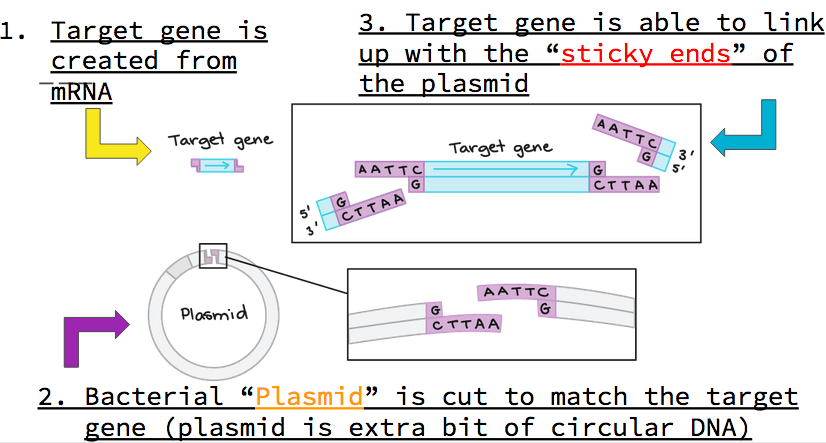
- Another enzyme (DNA Ligase)completely smooths and connects the DNA together. It is now one DNA molecule of recombinant DNA (DNA from more than one source – in this case: human and bacteria).

- Insulin carrying plasmid is then inserted into a a host bacteria without a plasmid (Ex. E. coli)
- These bacterial cells now can produce insulin which we can extract and use!
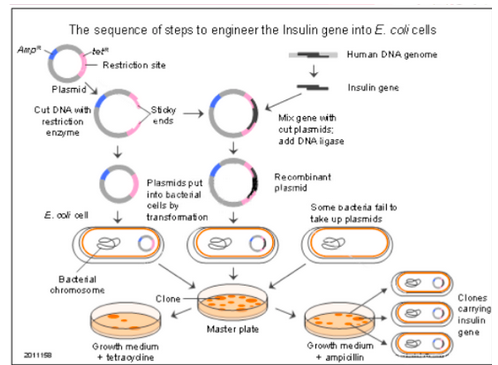
Ethics and Business Practices: Insulin Pricing in USA (Extra)

Comments by shaun pletsch